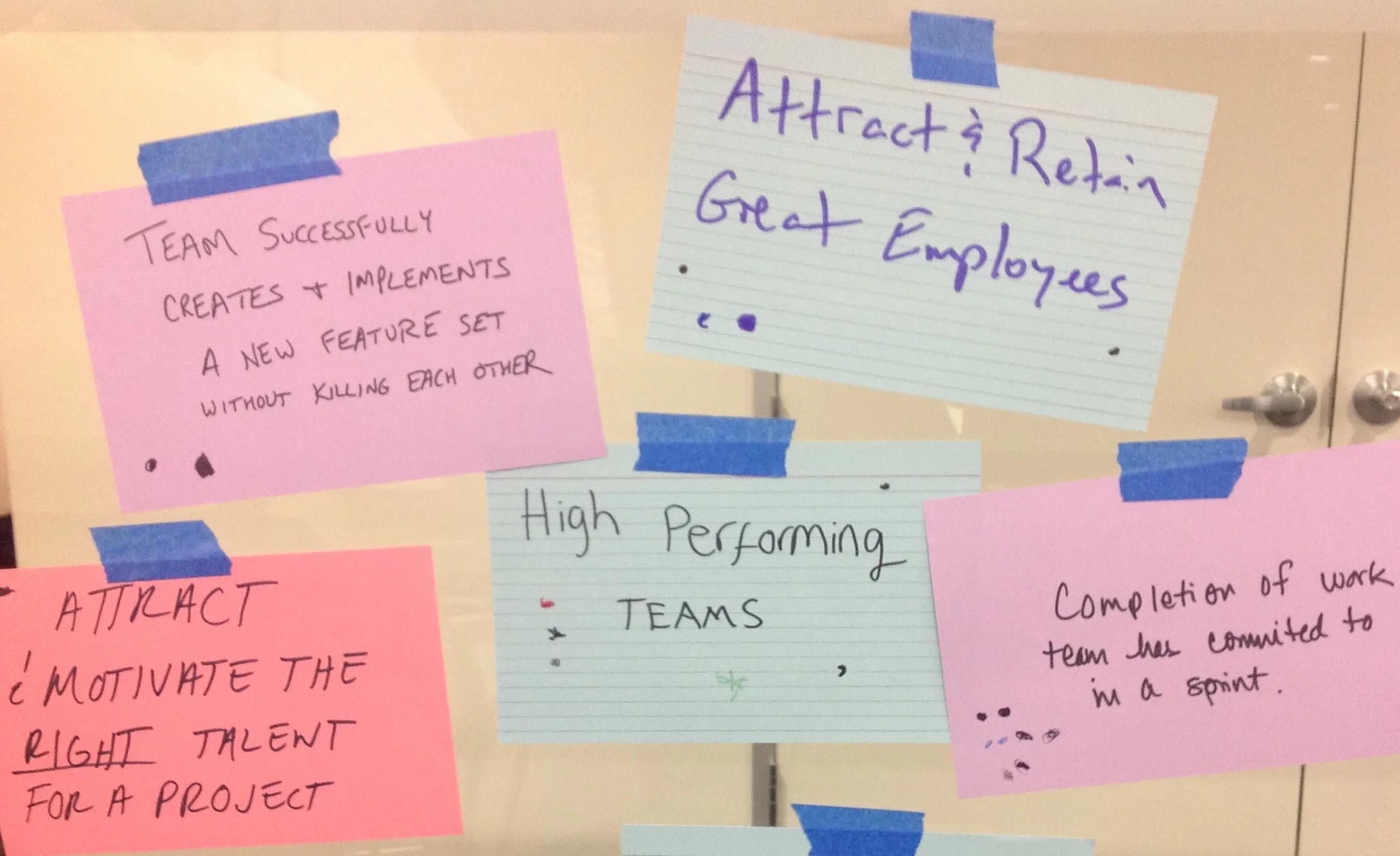Doing what matters most
/People use agile for a lot of reasons. Some want faster delivery; others higher quality. Some seek efficiency; others higher value. Some want to lead the pack; others simply want to tag along. Most want to use agile to improve... something. If the idea of improving resonates with you, read on.
If you are using agile to improve, optimize your improvement results by focusing your investment in agile on what matters most to you. Success with agile requires hard work. It makes sense to focus your hard work on the things appropriate to your circumstance.
Six steps to getting the results you want from your agile investment
Priority — Decide what improvement matters most
To determine what matters most, get some sense of your current state. What's working?… What's not?… Consider possible improvement goals and pick the one that is most compelling. Sometimes it's as easy as picking the thing that keeps you awake at night.Communicate — Get understanding and buy-in for change
Improving means making a change to the status quo. People need to understand why the change is necessary. Be clear as to why the current state is unacceptable. Communicate a vision of a future, better state. Make the vision compelling. It's far better to make the vision compelling and attract buy-in from your stakeholders than to impose the change on them. Your stakeholders need to understand why the change matters to them personally. Above all, be authentic.If you can't achieve buy-in, stop. A lack of buy-in to the change is a red flag. Probe the reasons why. Be prepared to reassess, adjust your communication or even the goal and try again.
Focus — Concentrate attention on what is most important
Once you have an improvement goal, give the effort to achieve the goal everything it needs to be successful. Allocate the right people with the appropriate skills, knowledge, and experience to get the job done. Give them space and permission to do their work. Provide the tools needed. Ensure that they have access to information. If they have a question, make sure they get the answer they need quickly. Eliminate distractions and artificial constraints.Intentionality — Act with the purpose of achieving what is most important
Results come from action. Get to work on making the change happen. The gap between your current state and your improvement goal defines the space for improvement experiments. Start experimenting. Be deliberate. From the portfolio of all things agile, pick practices and techniques most likely to have the biggest postive impact on achieving your goal. Try the simplest thing that might work. Go as fast as you can, but no faster.Reflect — Pause to consider the outcome of what has been achieved
Learn as you go. Be prepared to be suprised! Discard what isn't helpful; master what is.Adjust — Apply learning to (re-)set priority
On a regular and frequent basis, go back to step 1 and start over. Be prepared to adjust course based on what has been learned. Reassess your improvement goal and actions. If what you're doing isn't working, do something different.
Paying attention to what matters most to you, your team and your organization yields better, more meaningful results from your investment in agile. The conversation around what matters most can be challenging. For help in the conversation, you may want to consider using a construct such as the Agile Fluency® Model. For more information about the model, click here.
Are you a Product Owner looking to get a high return from your investment in your Scrum Team?
Learn how at our next Certified Scrum Product Owner Class!
31 July - 1 August 2019
Dulles, VA
Click here for more information and to register.





